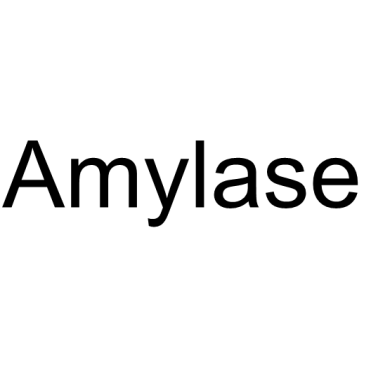
Diastase
CAS No. 9000-92-4
Diastase( —— )
Catalog No. M16467 CAS No. 9000-92-4
A diastase is any one of a group of enzymes which catalyses the breakdown of starch into maltose.
Purity : >98% (HPLC)
 COA
COA
 Datasheet
Datasheet
 HNMR
HNMR
 HPLC
HPLC
 MSDS
MSDS
 Handing Instructions
Handing Instructions
| Size | Price / USD | Stock | Quantity |
| 500MG | 38 | In Stock |


|
| 1G | Get Quote | In Stock |


|
Biological Information
-
Product NameDiastase
-
NoteResearch use only, not for human use.
-
Brief DescriptionA diastase is any one of a group of enzymes which catalyses the breakdown of starch into maltose.
-
DescriptionA diastase is any one of a group of enzymes which catalyses the breakdown of starch into maltose.(In Vitro):A mixture of glycosylated amylase and proline-rich proteins or fractions containing mostly non-glycosylated amylase predominantly promotes adhesion of S. gordonii G9B. Fractions containing amylase do not promote adhesion of S. sanguis 10556 to HAP.
-
In VitroA mixture of glycosylated amylase and proline-rich proteins or fractions containing mostly non-glycosylated amylase predominantly promotes adhesion of S. gordonii G9B. Fractions containing amylase do not promote adhesion of S. sanguis 10556 to HAP.
-
In Vivo——
-
Synonyms——
-
PathwayOthers
-
TargetOther Targets
-
RecptorStarch
-
Research Area——
-
Indication——
Chemical Information
-
CAS Number9000-92-4
-
Formula Weight——
-
Molecular Formula——
-
Purity>98% (HPLC)
-
SolubilityDMSO: 10 mM
-
SMILESN/A
-
Chemical Name——
Shipping & Storage Information
-
Storage(-20℃)
-
ShippingWith Ice Pack
-
Stability≥ 2 years
Reference
1.Gray GM. N Engl J Med. 1975 Jun 5;292(23):1225-30.
molnova catalog



related products
-
Super-TDU (1-31) TFA
Super-tdu (1-31) TFA is an endogenous ligand of heptapeptide receptor and has a strong anti-analgesic effect.
-
Filorexant
Filorexant is an orally bioavailable effective and selective reversible antagonist of OX1 and OX2 receptor with (Ki <3 nM).
-
demethyldaphnoretin-...
Demethyldaphnoretin-7-O-glucoside is a natural product that is isolated from Daphne oleoides Schreber subsp. kurdica (DOK). In Turkish traditional medicine, the aerial parts of DOK have been used to treat malaria, rheumatism and for wound healing.



 Cart
Cart
 sales@molnova.com
sales@molnova.com


